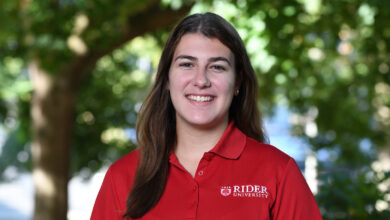Farm to the table: What is the big deal about organic food?
Have you ever seen a use farmer’s market and wondered what the buzz was or if the quality of food was better? The Office of Sustainability is here to tell you it is.
Farm-grown food, like fruits and vegetables, can be sourced in two distinct ways: “factory” farmed via mass production or locally grown. Factory farms are efficient and feed a lot of people for less money, but locally grown food is much fresher, more sustainable and will benefit your local community.
In terms of quality, when food is mass-produced, it is usually preserved for shipment and could be contaminated with pesticides interfering with the product’s freshness and nutritional value.
Virtua Health reported, “Fruits and vegetables begin to lose their nutrients within 24 hours of being picked, so fresher produce is more nutritious. In addition, locally grown food is picked at its peak ripeness, when it’s most dense with nutrients.”
Junior musical theater major John Ververis has experienced this first hand, “The quality and freshness of the locally grown produce can never be beaten. You can taste the difference and you know exactly where your food is coming from — that is something I am proud to support.”
As far as sustainability, understanding food’s carbon footprint is key to understanding why locally grown food is more sustainable.
Sustainable America says, “food travels the world before it reaches a plate.”
It’s true, most of the food in your grocery store has traveled more miles than you would in a day. Not to mention the production aspect of large-scale farming racks up a large carbon footprint, including fuel to power machinery and waste produced from the farm. However, when food is locally sourced it eliminates a lot of the food’s carbon footprint due to the smaller scale.
Fellow Eco-Rep Muriel Baki, whose family is involved in local food sourcing, said, “Local food is the cornerstone of a healthy and sustainable community.”
Luckily, locally sourced food is very accessible to the Rider community as Rider Dining uses locally sourced produce.
Resident District Manager of Gourmet Dining Erik Weatherspool said, “We believe in using fresh ingredients and sourcing locally, to support our community, as well as teaching our students the benefits of sourcing locally.”
Ambrogi Foods provides produce from local farms in the tristate area covering New York to Virginia.
According to Ambrogi Foods webpage, “We are proud to support strong, local community farms through our ‘Let’s Get Local’ program. We buy and distribute produce, dairy and specialty items locally allowing us to invest in the expansion and success of our neighborhood businesses and communities.”
Off-campus options include two of many great markets in the area, Princeton’s Farmer’s Market and Village Farms in Lawrence.
Lastly, in terms of community, most local farms create an abbreviated ecosystem on their land that can rejuvenate the environment for the community.
This ecosystem is formed because smaller farms usually host a multitude of crops, animals, trees and plants, creating a sanctuary for wildlife to thrive.
This kind of life-boosting ecosystem is not created on a large-scale factory farm because the elements of the ecosystem are too isolated from one another for production purposes. Not to mention farmers on large farms are usually poorly paid and bound to farming for large corporations.
The idea of creating a smaller scale wildlife sanctuary is very similar to the theme depicted in the film “Biggest Little Farm,” which features a determined couple who aspire to understand the complexity of nature and bring harmony to the community by starting their local farm.
On April 13 and 14, the Office of Sustainability will be hosting a screening of the breathtaking documentary, and we would love to see you there



